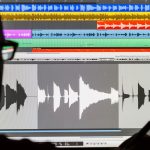Arrangement
Library compositions ideally need to get to the meat of the song quickly and capture the attention of the listener within a few seconds. Put yourself in an editor’s shoes—they may have to listen to several songs rapidly, so avoid lengthy or drawn-out intros. Where possible, compositions should have a definite ending on all versions (no fade-outs). It is better to build up to a high point rather than slow things down too much at the end.
Subtle changes every 8 or 16 bars, like adding a different instrument or rhythm, can help keep the track evolving without overwhelming the listener. These changes don’t need to be dramatic but should provide variety to keep the track interesting. Even choruses can have slight variations to offer editors more choices, increasing the chance of your track being selected. Think like a video editor!
Theme
It’s best to maintain a theme throughout a song, which the editor can dip in and out of; several dramatic changes are not generally advisable.
Rhythmical patterns of all types of genres are often used as underscores and are, therefore, essential to pay attention to.
Instrumentation
Like the theme, the main instrumentation of the song should remain consistent throughout. If a piano is the basis for the first part of a song and a guitar for the second part, it may be more difficult for editors to work with.
Overuse of sound effects is not advisable. If an element doesn’t enhance a song, is it necessary? Less can create well-needed space for others to come to the forefront; maintaining a soundtrack journey is useful for library music, where often not a lot of changes are desired.
Waveform
Background Music
Background Music for TV, Films, and Voiceovers
When music is meant to stay in the background—such as in podcasts, weather reports, or shopping channels—it tends to be more laid-back and atmospheric, providing a gentle rhythmic or melodic foundation that supports the mood without overshadowing the main content. This type of music is typically more understated, perfect for creating ambience and enhancing the scene without drawing too much attention to itself.






